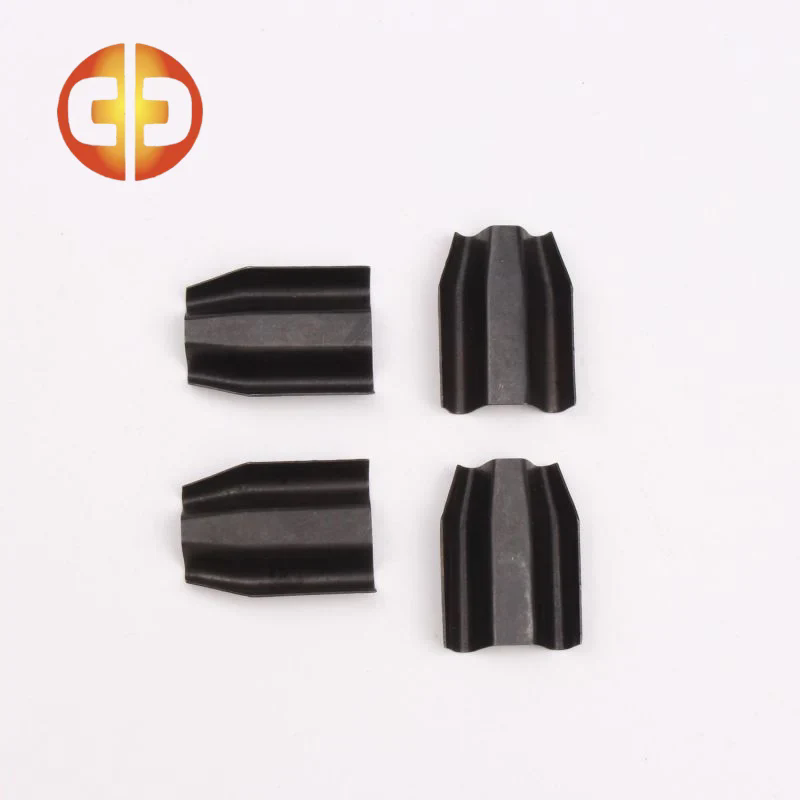Metal Stamping Parts with Magnets: Enhancing Precision and Functionality
2025-05-19
In the world of manufacturing, precision, durability, and functionality are essential qualities for producing high-quality products. Metal stamping parts with magnets offer a unique combination of these features, making them invaluable in various industries such as automotive, electronics, and consumer goods. This article explores the benefits, applications, and reasons why metal stamping parts with magnets have become a go-to solution for numerous engineering and manufacturing needs.

What are Metal Stamping Parts with Magnets?
Metal stamping is a manufacturing process where flat metal sheets are transformed into specific shapes using a die and press. These parts can be produced with high precision and in large volumes. When magnets are integrated into metal stamping parts, they enhance the functionality of the components by enabling magnetic properties, which are particularly useful in applications requiring attraction or repulsion forces, such as in electrical circuits, sensors, and holding mechanisms.
Magnetic metal stamping parts are typically produced by embedding magnets, often in the form of rare-earth magnets or ceramic magnets, into the stamped metal components. The combination of the metal structure’s strength and the magnetic properties creates a product that is both durable and highly functional.
Benefits of Metal Stamping Parts with Magnets
1. Precision and Accuracy: Metal stamping offers incredible precision, allowing for the creation of intricate designs and tight tolerances. When combined with magnets, the resulting parts maintain this high level of accuracy, ensuring that the final products meet stringent specifications and perform reliably.
2. Enhanced Functionality: The inclusion of magnets in stamped metal parts opens up a wide range of functional possibilities. Magnets can be used for a variety of purposes, including holding, latching, or even for creating an electromagnetic field. This added functionality makes these parts suitable for a variety of applications that require magnetic forces, such as in automotive assemblies, electrical systems, and industrial tools.
3. Cost-Effective Production: Metal stamping is a cost-effective process, especially when producing parts in large volumes. The integration of magnets into stamped metal parts can be done efficiently, reducing the overall manufacturing cost. Additionally, the durability of the materials ensures that the parts last longer, providing excellent value for money.
4. Durability and Strength: Metal stamping parts are typically made from strong materials such as steel, aluminum, or copper, which offer excellent durability and resistance to wear and tear. When magnets are embedded in these parts, they are protected by the surrounding metal, making them less likely to be damaged or exposed to environmental factors like moisture or dust.
5. Versatility in Application: The versatility of metal stamping parts with magnets makes them suitable for a wide range of applications. From automotive components and electronics to consumer products and industrial machinery, these parts can be tailored to meet specific requirements and can be easily incorporated into existing designs.
Applications of Metal Stamping Parts with Magnets
1. Automotive Industry: Metal stamping parts with magnets are commonly used in the automotive sector, particularly in applications such as magnetic sensors, actuators, and electromagnetic clutch systems. These parts are crucial for the smooth operation of advanced vehicle systems, including braking, safety, and powertrain components.
2. Electronics and Electrical Systems: In electronics, metal stamping parts with magnets are used in transformers, motors, and speakers. Magnets embedded in stamped metal parts help to facilitate electromagnetic interactions, which are essential for the efficient functioning of electrical devices and systems.
3. Industrial Equipment: Metal stamping parts with magnets are found in various industrial tools and machinery. These parts may be used in devices that require magnetic fields for operation, such as lifting magnets, holding devices, and magnetic separators. These components provide significant power while maintaining a compact and efficient design.
4. Consumer Goods: Many consumer products benefit from the integration of metal stamping parts with magnets. Examples include refrigerator magnets, magnetic closures for handbags or wallets, and even magnetic fasteners for clothing. The strength and versatility of these parts allow for the development of innovative solutions in everyday items.
5. Medical Devices: In the medical field, metal stamping parts with magnets are used in diagnostic equipment, sensors, and devices that require precise, reliable magnetic functions. These parts contribute to the overall performance and accuracy of medical instruments, ensuring patient safety and effectiveness.
The Manufacturing Process
The process of creating metal stamping parts with magnets involves several steps:
1. Design and Prototyping: The first step is to design the part, taking into account both the metal stamping requirements and the specific magnetic features needed. Prototypes are often created to test functionality and design before moving to full-scale production.
2. Metal Stamping: Metal sheets are fed into a stamping press, where a die is used to shape the metal into the desired form. The stamping process is highly efficient and can produce large quantities of identical parts with minimal waste.
3. Magnet Integration: Once the metal parts are stamped, magnets are embedded into the components. This can be done through various methods, including adhesive bonding, mechanical assembly, or even magnetic induction. The magnets are carefully positioned to ensure they provide the desired magnetic field without compromising the structural integrity of the part.
4. Quality Control and Testing: After production, each part undergoes rigorous quality control checks to ensure that it meets specifications. This may include magnetic field testing, dimensional checks, and durability assessments.
Conclusion
Metal stamping parts with magnets offer a powerful combination of strength, precision, and functionality. The ability to integrate magnets into high-precision stamped metal parts makes them ideal for use in various industries, from automotive and electronics to medical devices and consumer goods. As manufacturing technologies continue to evolve, the demand for these versatile parts is likely to grow, providing even more opportunities for innovation and efficiency in design. Whether you're designing complex machinery or developing everyday consumer products, metal stamping parts with magnets can provide the reliability and performance required to meet modern demands.


